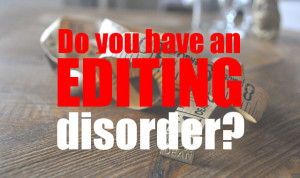
Images from JeepersMedia, FireAtWill and Terry Johnston.
Sure, the Hunger Games books are emotional roller coasters that broach deep moral questions. But a lot of books have those qualifications. Why aren’t they all as wildly popular as The Hunger Games?
Because the story is highly marketable on an organic level.
In English? A bunch of details in the story are easy to put on billboards, t-shirts and fan art. Its easy to show your love for a story (and thus spread the word about it) if you can show it with a simple phrase or image.
Let’s explore those details—and see if we can implement anything similar in our own work.
First: The books are marketable because they are about marketing.
In-world, the Hunger Games are marketed all over Panem: the Capitol’s favorite form of entertainment and propaganda for the districts. Contestants are celebrities, campaigning for support from rich Capitol officials who might send life-saving gifts during the games. They even have stylists, who function like marketing consultants and art directors combined.
Even Peeta’s declaration of love for Katniss before the games was a calculated PR move. Storytelling to win sympathy from the audience is a marketing fundamental.
Even after the story shifts and *SPOILER ALERT* the rebellion starts, Katniss becomes a figurehead for the movement. She even makes TV commercials.
Second: The books are full of iconography
All these details make up a built-in marketing campaign, just like marketing for the fictional venue of Jurassic Park became the marketing for the real-world movie. Covergirl even put out a new product line based on Capitol movie makeup.
Because these marketing elements are easy to use—not just for an ad agency, but for fans—they put the books and movies on the fast track to viral popularity. Let’s take a look at some of the icons.
The three-fingered salute.
A way the districts communicate solidarity. Full of solemn camaraderie, it makes an incredible silent anthem for the rebellion. It’s easy for fans to mimic at events and in photos–and they have.
Other examples:
- Any military salute
- Spock’s Live long and prosper
- In photos, bears a disturbing (though accidental) resemblance to a heil
UPDATE: The salute becomes a real-life symbol of resistance in Thailand.
Rue’s four-note song
A short, memorable tune that works like a commercial jingle. I got chills when I heard it at the end of the first movie trailer.
Other examples:
- The five-note melody in Close Encounters of the Third Kind
- Intel’s four-note ditty (or is it five?)
- Metro PCS’ “Hello, hello, hello”
The districts
Different districts with different strengths and “personalities” allow fans to identify with the one they like best. That means even more t-shirts!
Other examples:
- The Hogwarts Houses
- The Game of Thrones houses
- The Avengers
Fire
Katniss’ stylist chose to use fire to represent her district, rather than dressing her and Peeta in the overused and unimaginative coal miners’ outfits. A brilliant move; fire is elemental, powerful and quick to spread. It’s a foreshadowing of the rebellion.
Other examples:
- Fire in Fahrenheit 451
- Water in Memoirs of a Geisha
- Wind in The Name of the Wind
Archery
Weapons make great symbols for the characters who carry them, and from a look at some of the current popular movies, it seems archery is making a comeback.
Other examples:
- Robin Hood’s bow
- King Arthur’s Excalibur
- Luke’s lightsaber
The slogan: May the odds be ever in your favor
Slogan. Catchphrase. In marketing we call them “taglines”—whatever you want to call it, the slogan for the games doubles as a slogan for the books.
Other examples:
- May the Force be with you
- Live long and prosper
- Winter is coming
- Big Brother is watching you
- Why so serious?
Logo: The Mockingjay
The mockingjay makes various appearances throughout the stories, starting with a pin given to Katniss before the games. The live mockingjay, a botched Capitol science experiment, soon becomes the symbol for the rebellion, and Katniss herself is known as the Mockingjay by book three. But the foundation laid down by the stylized bird on her pin has become the logo for the entire franchise.
Other examples:
- Batman’s bat symbol/signal
- The rose in Beauty and the Beast
- The Scarlet Pimpernel
How can you harness this power in your book?
All these elements in the Hunger Games fit organically into the story—so don’t force any into your own. Scan the list for similarities to your book. Do you have several different people groups? Does your hero have a family crest, or carry a unique weapon? Do your protagonists have a particular motto?
Find one or two logical places to incorporate an icon, or to emphasize an existing one. The more organic and the more unique, the better.
Ultimately, much of your book’s success will be left up to chance, but let’s swing the odds in our favor as much as possible, eh?
—








